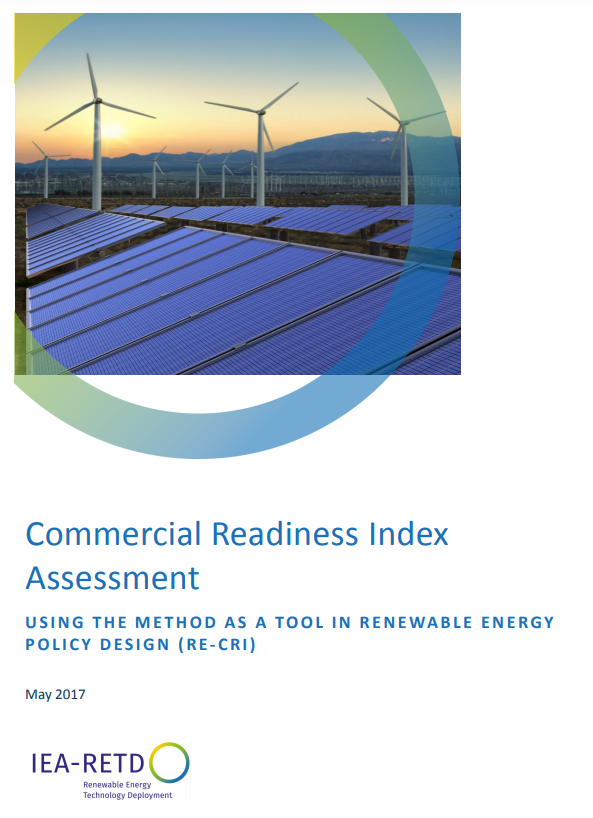Understanding the policy and market conditions that enable renewable energy technologies to get to market – using the Commercial Readiness Index (CRI) assessment method as a tool in renewable energy policy design.
Assessing the commercial maturity of renewable energy technologies
 Emerging renewable energy technologies (RETs) face many challenges to get to market, including high up-front capital requirements, long payback periods, regulatory uncertainty, and perceived risks of new solutions.
Emerging renewable energy technologies (RETs) face many challenges to get to market, including high up-front capital requirements, long payback periods, regulatory uncertainty, and perceived risks of new solutions.
Understanding the policy and market conditions that enable renewable energy technologies to get to market – or hinder them from doing so – is necessary for effective policy making. This is increasingly important given the evolving context of RET development and deployment. As these RETs mature, and their share in the energy mix grows, there is greater pressure to make an efficient use of scarce public funding.
The IEA RETD TCP (the Technology Collaboration Programme for Renewable Energy Technology Deployment by the International Energy Agency) has commissioned a study to assess the commercial maturity of RETs using the Commercial Readiness Index (CRI) framework in order to identify appropriate policy approaches for stimulating RET deployment. The study explores the use of the CRI framework through case studies with the aim of illustrating the commercialisation journey of two RETs in two different contexts: solar photovoltaics (PV) in Germany and offshore wind in the UK.
The target audience of this study are decision makers and policy makers, and the project aims to answer the following key questions:
1. How can the CRI be used by policy makers and what are its main advantages and limitations?
2. What are the most effective policies to support the commercialisation of RETs?
3. What are the opportunities to refine the CRI to address some of its limitations?
